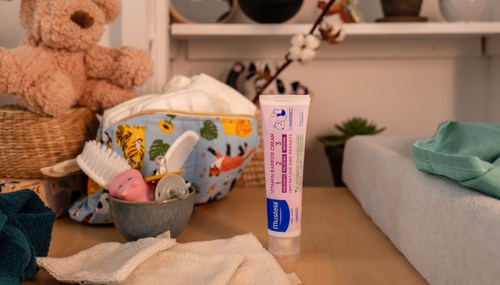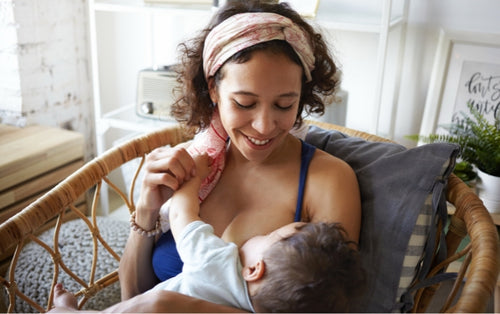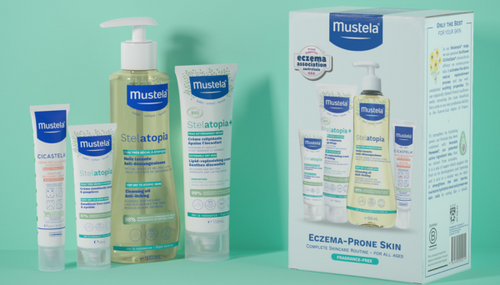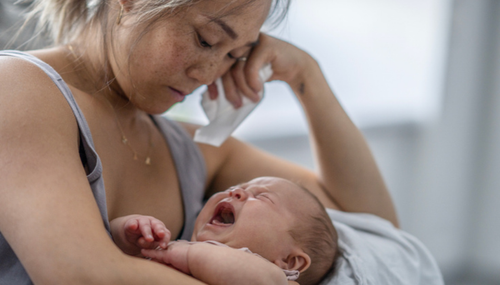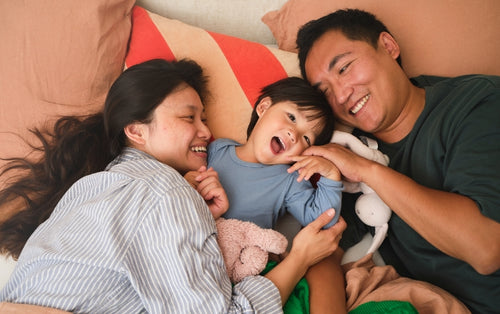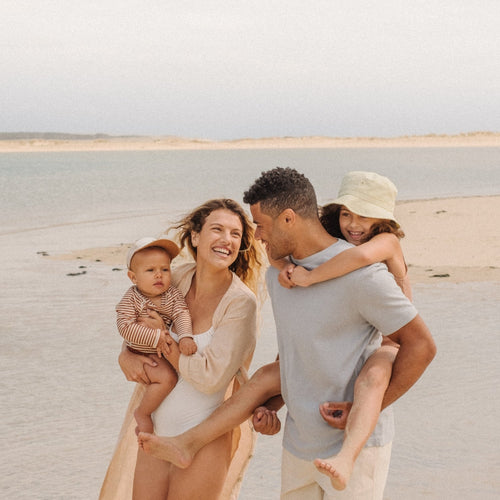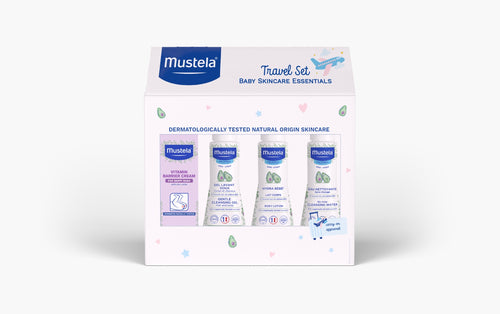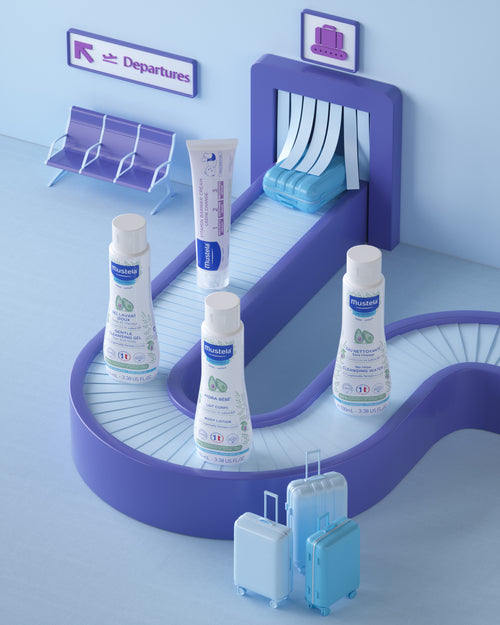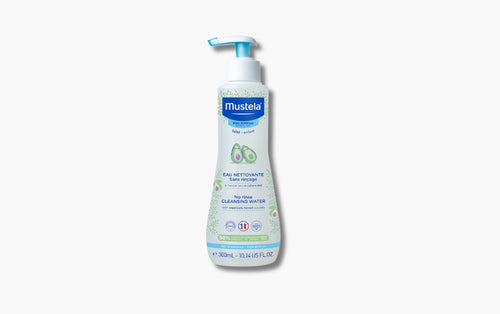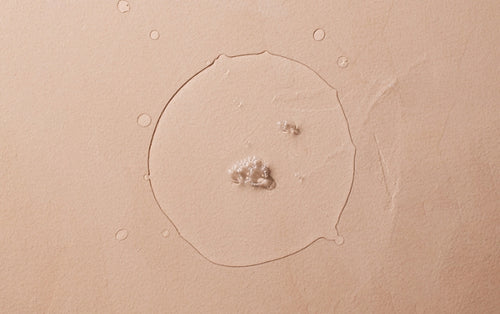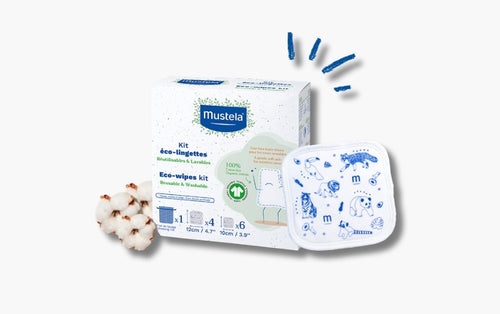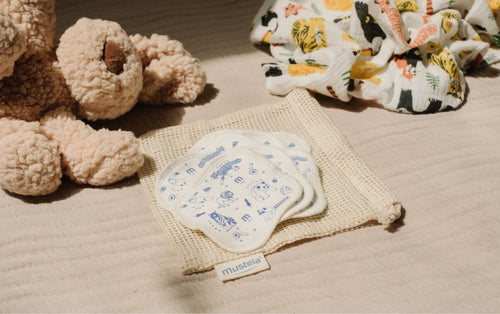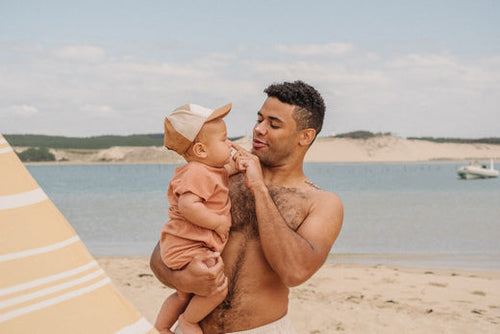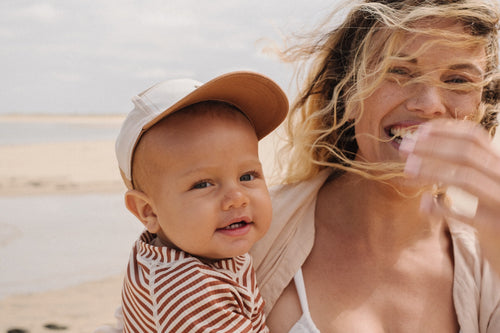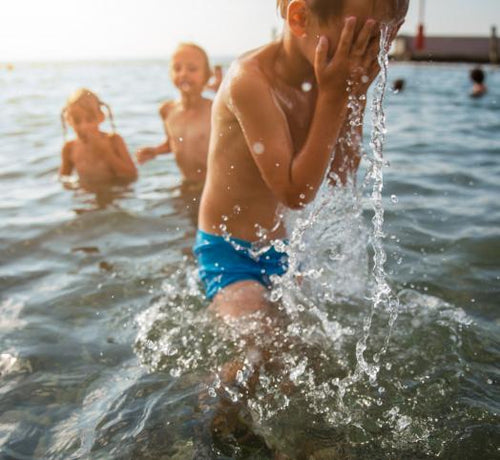Planning your baby's first holiday can feel overwhelming, but packing the right essentials makes all the difference. From sun protection and lightweight clothing to feeding supplies and comfort items, your little one needs specific gear for safe and enjoyable travel. This comprehensive guide covers everything you need to pack, ensuring your baby stays comfortable, protected, and happy throughout your family adventure.
When can you start traveling with a newborn?
Most infants can travel domestically from around 6-8 weeks old, once they've had their initial health checks and vaccinations. Airlines typically allow babies as young as 2 weeks for domestic flights, though many paediatricians suggest waiting longer for the immune system to develop.
For road trips across Australia, newborns require frequent stops every 1-2 hours to avoid prolonged time in car seats. Parents should consider their baby's feeding schedule and sleep patterns when planning departure times. Summer travel demands extra attention to temperature regulation during long journeys.
International travel becomes safer after 3 months old when babies have received more vaccinations. However, destinations requiring specific immunisations may need to wait until 6-12 months old depending on vaccine schedules. Always consult your GP before booking travel with young infants to ensure your little one is ready for the adventure ahead.
Newborn travel guidelines by age
- Birth to 7 days: Airlines require medical clearance for travel, making this period unsuitable for most journeys.
- 1-8 weeks: Road trips under 2 hours work well with frequent stops every 30 minutes for feeding.
- 2-3 months: First vaccinations received, making domestic flights safer with doctor approval and proper documentation.
- 3-6 months: Sweet spot for travel as feeding schedules stabilise and babies sleep longer between feeds.
- 6-12 months: Increased alertness requires more entertainment, but solid foods make destination dining easier for families.
- Pack extra nappies in your travel pouch - one per hour of journey time plus 50% buffer.
- Bring familiar comfort items and a small commission of favourite toys to maintain routines away from home.
Passport and ID requirements for infants
International travel requires a valid passport for every Australian child, regardless of age. Even newborns need their own individual passport document to cross borders. The application process demands both parents' presence at an Australian Post office or passport office, along with the baby's birth certificate and proof of parental identity.
Domestic flights within Australia present different rules entirely. Children under 18 don't need identification for TSA security checks. However, airlines may request a birth certificate to verify your infant's age, particularly for lap children under two years old who travel without purchasing a separate seat.
Some airlines like Jetstar specifically ask for proof of age documentation during check-in procedures. Keep a certified copy of your baby's birth certificate easily accessible in your carry-on bag. This simple preparation prevents potential boarding delays and ensures smooth travel experiences for your family.
Medical records and vaccination certificates
Certain destinations mandate proof of specific immunisations before entry, making vaccination records essential travel documents. Countries with yellow fever risks often require International Certificates of Vaccination or Prophylaxis (ICVP) for travellers arriving from affected regions.
Healthcare providers recommend scheduling travel consultations 4-6 weeks before departure. This timeline allows proper vaccine administration and ensures certificates receive official stamps and signatures. Your GP can advise which immunisations suit your baby's age and destination requirements.
Store vaccination documents alongside passports in easily accessible locations. Digital copies provide valuable backup protection should original certificates become damaged or misplaced during your journey. Australian families can obtain immunisation history statements through Medicare online services, creating convenient peace of mind for international adventures.
Essential packing checklist for infant travel
Newborn bag must-haves
- Portable sound machine with white noise settings helps maintain sleep routines in unfamiliar hotel rooms.
- Insulated bottle warmer keeps formula at perfect temperature during long outings without requiring hot water access.
- Waterproof changing mat with raised edges prevents messes on public surfaces and beach towels.
- Hand sanitiser gel specifically formulated for babies protects against germs when soap isn't available.
- Disposable bibs reduce laundry loads during extended trips while protecting outfits from feeding spills.
- Travel-sized body wash doubles as gentle shampoo, eliminating the need for multiple cleansing products.
- Emergency pacifiers sealed in individual bags provide backup comfort items if the main one drops.
Feeding essentials for travel
Thermal bottle bags ensure formula stays at optimal temperature during extended outings without requiring constant reheating. These insulated carriers work particularly well for Australian summer destinations where heat can spoil prepared bottles quickly.
Pack multiple feeding bibs in waterproof pouches to manage inevitable spills during car journeys and flight turbulence. Silicone bibs with catch pockets prove invaluable for older infants attempting self-feeding in unfamiliar environments.
Breastfeeding mothers benefit from bringing nursing covers that double as lightweight blankets for air-conditioned spaces. Consider packing a manual breast pump for relief during long travel days when regular feeding schedules become disrupted. Sterilising tablets offer convenient bottle cleaning without access to boiling water, making formula preparation safer at your final destination.
Nappy changing supplies
- Pack extra nappies beyond your estimated daily needs, allowing for flight delays or unexpected blowouts during travel.
- Biodegradable wet wipes work effectively for sensitive skin while reducing environmental impact at your destination.
- Nappy sacks prevent odours from soiled nappies when disposal bins aren't immediately accessible during outings.
- Barrier cream in tubes prevents leakage in luggage compared to tubs that may open during transit.
- Disposable gloves protect your hands during messy changes in public facilities with questionable cleanliness.
- Hand sanitiser wipes offer quick cleaning after nappy changes when soap and water aren't available.
- Cloth nappy users should bring wet bags for storing soiled items until washing facilities become available.
Baby clothing for different climates
Temperature variations across destinations demand strategic clothing choices for your little one. Breathable cotton fabrics work best in tropical climates, allowing air circulation while absorbing moisture from active babies exploring new environments.
Layering becomes your secret weapon when travelling between air-conditioned spaces and outdoor heat. Start with lightweight onesies as base layers, then add or remove cardigans and light jackets as needed. This approach prevents overheating while ensuring comfort during temperature transitions.
Cold weather destinations require cosy fleece jumpers and warm booties to maintain body heat. Merino wool onesies offer natural temperature regulation, keeping babies comfortable whether the climate turns chilly or unexpectedly warm during your family adventure.
Extra outfits for unexpected changes
Pack at least three complete outfit changes per day for babies under 12 months, as spills, blowouts, and unexpected messes happen frequently during travel.
Store one emergency outfit in your day bag and keep backup clothes easily accessible in hotel rooms for quick changes after beach or pool activities. Include extra singlets and shorts in breathable fabrics, plus one warmer layer for air-conditioned restaurants or evening outings.
Toddlers particularly benefit from having spare clothes in waterproof bags, as their increased mobility leads to more clothing mishaps during summer adventures.
Must-have travel gear for infants
Lightweight strollers
Ultra-compact strollers transform summer travel by folding small enough for overhead bins and car boots. Consider these key factors when selecting your travel stroller:
- Weight capacity: Most accommodate children up to 22kg
- Recline options: Essential for nap times during long outings
- Storage space: Underneath baskets vary significantly between models
Remember that ultra-compact designs sacrifice some comfort features, so evaluate your specific travel needs before purchasing.
Baby carriers for hands-free travel
Structured carriers excel during airport navigation and sightseeing adventures where mobility matters most. Modern designs distribute weight evenly across your shoulders and hips, preventing fatigue during extended walking tours or museum visits.
Ring slings offer quick adjustments for feeding breaks and provide compact packing solutions that slip easily into day bags. These fabric carriers work particularly well for shorter excursions when you need frequent baby access.
Consider carriers with built-in storage pockets for travel documents and essentials, eliminating the need for separate bags during security checks. Many parents find that practising at home before departure builds confidence for smooth transitions between carrying positions throughout their journey.
Travel cots and portable sleep solutions
Lightweight portacots transform summer holidays by providing familiar sleeping environments wherever your adventures take you. Modern designs fold compactly into carry bags with shoulder straps, making transport effortless.
Look for models featuring breathable mesh sides that promote airflow during warm nights while allowing you to monitor your sleeping baby. Quick-setup mechanisms prove invaluable after long travel days when everyone needs rest immediately.
Consider portacots with adjustable mattress heights if travelling with newborns, as bassinet-level positioning makes nighttime feeds more manageable in unfamiliar hotel rooms. Many families find that bringing their own travel cot eliminates uncertainty about accommodation-provided options while ensuring consistent sleep quality throughout their summer getaway.
Baby international flight preparation
Booking flights with infants
Domestic flights across Australia allow lap infants under two years to travel without purchasing separate tickets, though you must still reserve a space during booking. International journeys require infant tickets at approximately 10% of adult fare costs, regardless of whether your child occupies their own seat.
Bassinet seats prove invaluable for long haul flights, accommodating babies up to 11kg who can lie flat comfortably. Contact airlines directly to secure these limited spots, as online systems rarely allow advance bassinet reservations. Weight restrictions vary between carriers, so verify specific requirements when making your booking.
Multiple infants travelling with one adult require special arrangements through airline customer service teams. The second infant must occupy a purchased seat with an approved car seat, as safety regulations prevent two lap infants per adult passenger during flight operations.
Carry-on essentials for flying with baby
Nappies and wipes become your most critical carry-on items, requiring one for each hour of travel plus extras for potential delays. Pack these alongside a portable changing pad that fits airplane bathroom constraints, making nappy changes manageable in tight spaces.
Feeding supplies deserve priority placement in easily accessible pockets. Formula powder in pre-measured containers eliminates mixing guesswork mid-flight, while empty bottles pass through security without liquid restrictions. Breastfeeding mothers benefit from bringing nursing covers and burp cloths within arm's reach.
Entertainment items should focus on lightweight, quiet options that won't disturb fellow passengers. Small board books and soft toys provide comfort without creating noise issues during the journey. Remember to pack spare clothes for both you and your little one, as spills and accidents happen frequently at 30,000 feet above ground.
Airport security with baby items
Baby formula, breast milk, and food items pass through Australian airport security without the standard 100ml liquid restrictions. Security officers will request separate screening for these items, so pack them in easily accessible containers within your carry-on bag.
Prepare for additional screening time by arriving earlier than usual. Officers may test liquid samples using special strips. Ice packs and cooling accessories for maintaining proper temperatures also receive approval through checkpoints.
Strollers and baby carriers move through x-ray machines or receive manual inspection depending on size. Wearing your baby in a carrier often proves faster than managing stroller equipment during busy security periods. Keep essential documents like birth certificates readily available, as officers may request age verification for lap infants before boarding.
Managing ear pressure and feeding
Timing feeds strategically during takeoff and descent helps babies swallow naturally, which equalises ear pressure effectively. Start feeding as the aircraft begins its climb or descent rather than waiting for discomfort to appear.
Breastfeeding mothers find this approach particularly convenient since no preparation is required. For bottle-fed babies, have your formula or expressed milk ready before the pilot announces altitude changes.
A good idea involves offering a pacifier if your little one refuses to feed during these critical moments. The sucking motion activates the same pressure-relieving mechanism as swallowing. Keep backup pacifiers within arm's reach, as dropped items during turbulence can leave parents scrambling for alternatives during descent when ear pressure peaks.
Entertainment for long flights
Small, lightweight toys work more effectively than bulky items during extended flights with infants. Pack familiar comfort objects alongside one or two new surprises to capture attention when fussiness peaks.
Suction cup spinners attach directly to airplane windows, creating fascinating visual entertainment that captivates babies for surprisingly long periods. These compact toys prove invaluable during daytime flights when natural light enhances their appeal.
For older infants approaching their first birthday, stackable cups and soft fabric books provide tactile engagement without creating noise that disturbs fellow passengers. Parents discover that rotating toys every 30 minutes maintains interest levels throughout the journey, making even the longest international flights more manageable for everyone aboard.
Car travel essentials for babies
Infant car seat safety requirements
Australian law mandates that children under six months must travel in rear-facing infant restraints at all times during vehicle journeys. These approved capsules or convertible seats require proper installation using either ISOFIX anchor points or vehicle seatbelts according to manufacturer specifications.
Before departure, verify your car seat meets Australian Standard AS/NZS 1754 certification. Check weight and height limits carefully, as exceeding manufacturer guidelines compromises safety effectiveness during sudden stops or collisions.
Position infant seats in the back row whenever possible, as this location offers maximum protection from airbag deployment and impact forces. Never install rear-facing seats in front positions equipped with active passenger airbags, as this creates potentially fatal collision risks for your little one during summer road adventures.
Road trip packing strategies
Packing cubes revolutionise vehicle organization by separating baby essentials into easily accessible categories. Dedicate one cube for feeding supplies, another for clothing changes, and a third for entertainment items that you'll need during stops.
Position your most frequently used items within arm's reach of the driver or passenger seat. Keep a well-stocked nappy bag in the front compartment containing wipes, nappies, and a change of clothes for quick roadside access. Your main luggage can stay safely stored in the boot.
You can pack an insulated cooler bag with formula, sippy cups, and snacks near their feet. This eliminates the need to stop and rummage through boot storage every time hunger strikes during your road adventure.
Managing stops and feeding schedules
Plan regular breaks every two hours during road trips to allow your baby time outside their car seat for feeding, nappy changes, and gentle stretching. These frequent stops prevent restlessness while ensuring your little one stays comfortable throughout longer journeys.
Align your departure time with your baby's natural feeding rhythm when possible. Starting after a feed gives you the maximum window before the next stop becomes necessary. Research rest areas along your route that offer clean facilities and safe spaces for feeding.
Keep feeding supplies easily accessible in your front compartment rather than buried in boot storage. A thermal bottle holder maintains the right temperature for formula throughout your journey, while breastfeeding mothers benefit from having a nursing cover within arm's reach for roadside stops.
Baby skincare and health essentials
First aid kit for infant travel
- Pack infant paracetamol and ibuprofen in original packaging with clear dosing instructions for your kid's weight.
- Include a reliable digital thermometer specifically designed for babies to monitor fever accurately during trips.
- Carry sterile saline solution and a nasal aspirator to clear congestion when colds strike unexpectedly.
- Bring adhesive bandages in various sizes plus antiseptic wipes for treating minor cuts and scrapes.
- Pack oral rehydration sachets suitable for infants to combat dehydration from vomiting or diarrhoea.
- Include tweezers for removing splinters and a small tube of antibiotic ointment for wound care.
- Carry your pediatrician's emergency contact details and any prescription medications in clearly labelled containers.
Gentle cleansing and moisturising products
Our Travel Set offers the perfect solution for maintaining your baby's skincare routine during summer holidays. This convenient, carry-on approved kit contains four essential products in travel-friendly sizes: Gentle Cleansing Gel (100ml) for bath time, No-Rinse Cleansing Water (100ml) for quick face and nappy area cleaning, Hydra-Bébé Body Lotion (100ml) for daily moisturising, and Vitamin Barrier Cream (50ml) for nappy rash prevention.
Formulated with natural ingredients including patented Avocado Perseose®, these products are scientifically proven to protect and strengthen your baby's natural skin barrier while being gentle enough for sensitive skin from birth. The compact sizes make packing effortless while ensuring you have everything needed for fuss-free skincare during your summer adventure, whether you're dealing with saltwater, chlorine, or the harsh effects of air conditioning in hotel rooms.
Sun protection and after-sun care
Infants under six months should be kept completely out of direct sunlight, relying instead on physical barriers like shade, protective clothing, and wide-brimmed hats.
For babies over six months, apply a broad-spectrum SPF 50+ sunscreen to exposed skin areas, choosing mineral-based formulas containing zinc oxide or titanium dioxide that are gentler on sensitive skin. Remember that Australian UV levels can be dangerously high even on cloudy days, so check daily UV index readings and implement sun protection whenever levels reach 3 or above.
Reapply sunscreen every two hours or immediately after swimming, and combine it with long-sleeved UV-protective clothing, sunglasses that meet Australian safety standards, and strategic use of shade during peak UV hours between 10am and 4pm.
After sun exposure, soothe your child's skin with gentle, fragrance-free moisturisers to maintain hydration and prevent irritation from salt water, chlorine, or environmental factors encountered during your summer holiday adventures.
Nappy rash prevention in hot weather
Heat and humidity create perfect conditions for nappy rash to develop rapidly during summer holidays. Frequent nappy changes become even more critical when temperatures soar, as perspiration combines with moisture to irritate your baby's delicate skin.
Choose ultra-absorbent nappies designed for extended wear during hot weather adventures. Allow your little one some nappy-free time in air-conditioned hotel rooms whenever possible, giving their skin chance to breathe and dry completely.
Apply a zinc-based barrier cream at every change to create protective coverage against moisture and friction. Pack travel-sized tubes in your day bag for quick touch-ups during beach outings or pool sessions, ensuring consistent protection throughout your summer holiday.
